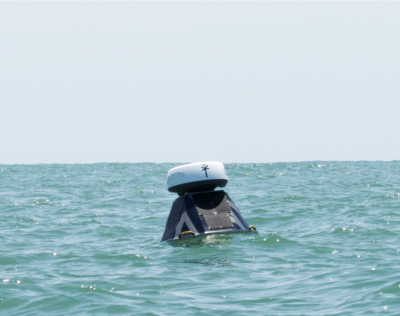 Faster Warnings, Safer Coasts: How HyperKelp is Transforming Tsunami Detection
Faster Warnings, Safer Coasts: How HyperKelp is Transforming Tsunami Detection
On the heels of a powerful earthquake and resulting tsunami this week, communities worldwide were reminded of the devastating potential of natural disasters—and the critical role of early warning systems. While the loss of life was limited, largely thanks to timely alerts and coordinated evacuations, the event underscores why HyperKelp is building the next generation of tsunami detection technology.
At HyperKelp, we’ve developed a smarter, faster, and more resilient approach to detecting tsunamis. Traditional systems, such as NOAA’s DART buoys, are effective but expensive and sparsely distributed. With fewer than 40 DART stations globally, massive regions of ocean remain effectively blind to tsunami threats. HyperKelp’s solution is to dramatically increase coverage and cut detection time using satellite-connected, GPS-equipped surface buoys powered by AI.
Backed by the National Science Foundation (NSF), our Tsunami Alert System (TAS) was developed through extensive field testing, machine learning development, and interviews with emergency planners, scientists, and international stakeholders. What we learned shaped our mission: accuracy, speed, and accessibility are essential—not optional.
Each HyperKelp buoy uses L5 GPS to measure subtle shifts in sea surface height, a reliable indicator of tsunami activity. Combined with real-time barometric pressure readings and inertial motion sensors, the data is fed into machine learning algorithms capable of identifying tsunami signatures with over 99% accuracy. These alerts are transmitted via satellite to warning centers in under a minute—giving officials more time to evacuate populations and activate emergency plans.
This week’s event reinforces what our NSF research confirmed: early detection isn’t just about scientific advancement—it’s about saving lives. The difference between a one-minute and a ten-minute warning can mean tens of thousands of people reaching higher ground—or not.
What makes HyperKelp’s platform truly disruptive is its scalability. Our buoys are compact, solar-powered, and designed for low-cost deployment from ships, aircraft, or even unmanned vessels. With this approach, we envision a world where tsunami detection points increase from dozens to thousands, covering vulnerable coastlines, small island nations, and underserved regions that current systems simply can’t reach.
This expanded reach also means more accurate modeling. By providing high-resolution, real-time data to scientists and forecasters, our network will help refine tsunami propagation models and reduce false alarms—another key issue raised during our NSF interviews.
Looking ahead, HyperKelp is working closely with NOAA, FEMA, international partners, and defense organizations to integrate our system into broader emergency response infrastructure. As climate change increases the frequency and intensity of natural hazards, resilient, affordable, and scalable solutions like ours will be critical.
We were inspired this week by how well current systems performed—but we know we can do better. HyperKelp’s technology isn’t just an upgrade; it’s a reimagining of what global tsunami awareness can look like. And with each new deployment, we get one step closer to a world where coastal communities aren’t just warned—they’re protected.

